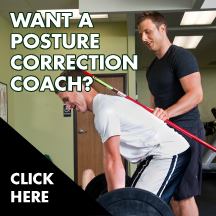Not by eating or drinking it, but by injecting it
That’s right, I said injecting it. It’s called prolotherapy, and it is currently being used among some of the world’s top osteopathic and medical doctors to treat sports related ailments ranging from soft tissue damage to tendon and ligament injuries.
The driving idea behind prolotherapy is that the human body is innately capable of healing and repairing itself. Sometimes, however, the body simply isn’t able to do its job fully. Typically, when you hear someone talking about their old nagging injuries and pain, this is what they are referring to. Essentially, they hurt themselves which prompted their body to start healing. Most likely, the healing process was able to do its job at least partially, but now the muscle, joint, tendon, or ligament is functioning in a diminished, half healed state. This is where prolotherapy can help!
What it is, and how it works
While there are many varieties of prolotherapy solutions, the most widely used and effective one contains the simple combination of dextrose (a monosaccharide simple sugar) and lidocaine (a local anesthetic). Some doctors prefer to use added agents such as glycerine, phenol, or sodium moorhuate, but most of the results can be achieved from the dextrose and lidocaine alone.
Basically, when introduced into the body via injection, the dextrose reinitiates the natural inflammatory process that usually occurs right after an injury. This quite literally kick-starts the body’s healing response by making it release new growth factors and repair cells called fibroblasts.
The prolotherapy solution helps your body refocus its healing efforts into the injection site which aids in bringing it back to one-hundred percent pain free functioning.
Cortisone shots vs. prolotherapy
It is likely that you have had, or heard of someone who has experienced a cortisone shot sometime in their lifetime. Whether it was an NFL player, cyclist, or tennis player, cortisone injections are very prevalent in sports injury treatment. Like prolotherapy, cortisone injections are frequently used to treat overuse injuries in tendons, like tennis elbow and patellar tendonitis.
The BIG difference between cortisone and prolotherapy is how they actually treat the effected area to provide relief. The goal with cortisone is to bring down inflammation in order to reduce pain and swelling. Quite on the contrary, the goal of prolotherapy is to actually cause inflammation so that the body will heal the injured tissue by sending in repair cells.
The dark side of cortisone
The inflammatory process is how the human body heals. When we injure our shoulder working out, our body responds by sending a rush of blood into the area. This blood is rich with natural compounds that aid in healing and regeneration of tissue. Simply put, if the body did not go through this inflammation after an injury, humans would NEVER be able to heal!
It is well established that one of the adverse side effects of cortisone shots is the deterioration of connective tissue. When cortisone is used to treat injuries like tennis elbow, it provides only temporary relief by bringing down inflammation. Unfortunately, when inflammation is brought down, so is the ability of the body to heal itself. The cortisone will provide people with relief for a few weeks or months, but more cortisone shots are typically needed down the road, potentially causing further damage.
It seems counter-productive doesn’t it? Why would you put something in your body that will only provide temporary pain relief without any long-term benefit? Why would a doctor give you something that is actually going to stop that area from healing itself?
A recent medical review highlights this point. The study was done with thousands of patients who had either shoulder pain, achilles tendon pain, or elbow tendonitis. Some patients were given a shot of cortisone into the effected area, and as expected, these patients experienced a dramatic and instant reduction of pain that lasted for days and even weeks.
However, when they were re-evaluated at 6 and 12 months, the results were much less optimistic. It turns out that the individuals who had received cortisone injections had a much lower rate of recovery when compared to the control group that either did nothing, or participated in physical therapy. Additionally, the cortisone patients had a 63% higher risk of re-injuring the area.
Don’t get me wrong, cortisone definitely has medical merit and its own set of uses. However, my opinion as a personal trainer is that it is unwise to use cortisone to treat things like tendonitis and other small soft tissue injuries. Cortisone might be a good option for someone that is elderly and simply seeking some pain relief. However, an athletic person with years ahead of them might want to think twice about getting a cortisone shot as it can reduce the chances of healing. Best case scenario, it relieves pain and makes you dependent on getting recurring shots every few months.
What I am trying to get across to you is always think twice before volunteering for a cortisone shot. Do your research first and possibly get a second opinion! Also, look into the benefits of prolotherapy. While some physicians do not believe in the efficacy of prolotherapy, others cannot say enough good things about it. Here are a few medical studies on prolotherapy and its effectiveness:
Prolotherapy for chronic low back pain
Prolotherapy for chonric musculoskeletal pain
My experience with prolotherapy
In my younger years, and largely due to bad form and muscle imbalances, I was constantly injuring myself playing sports and lifting weights. I pretty much did it all. I have torn or severely damaged muscles, tendons, and ligaments.
Eventually, through adjustment of my training and regulating the sports I engaged in, I was able to stop this horrible injury cycle from continuing. I still was, however, plagued with old injuries that never fully healed. I wasn’t hurting myself anymore, but I had some serious injuries that needed attention. This is when I discovered prolotherapy.
One of the muscles that I damaged while wrestling was my serratus anterior (a muscle that plays a crucial role in stabilizing the shoulder blade). This muscle was basically paralyzed which made my shoulder blade protrude out my upper back when I raised my arm above my head, a condition known as winging scapula. This was extremely debilitating, and literally stopped me from being able to perform the activities I loved, like lifting weights and playing sports.
I met a physician in the area that does prolotherapy, signed up for an appointment, and a few weeks later had my first injection date scheduled. The injection started with a dose of lidocaine to numb the injection site followed by the prolotherapy solution which I could barely feel because of the anesthetic. Before I knew it, the appointment was over, and I was on my way back home.
When I arrived home (about thirty to forty minutes later) the lidocaine started to wear off, and I started to feel some pain. It was not excruciating pain, but it was definitely not comfortable either. I managed to fall asleep that night, being careful to lay on the non-injected shoulder. When I awoke in the morning, I was amazed to see that my serratus anterior had regained nearly one-hundred percent function again. I was in shock! It was still sore, even more so than the night before, but it was now functioning like it was supposed to, and my winging scapula was mostly gone. I went back two months later for a follow-up injection, and now (one year later) I no longer have any problems with my serratus anterior at all!
Needless to say, my experience with prolotherapy sold me on its benefits and uses. It is comforting to know that there is a simple, some-what natural, alternative to cortisone injections and surgery. This is a tool that every athlete should be aware of and keep in their arsenal!
If you are looking for a physician in the Greater Detroit area that does prolotherapy email me at [email protected]. If you enjoyed reading this post then please give it a “like” below!




Hi blake,
Great article and great knowledge, as always. May you bring up more details about the procedure? Did the doctor injected dextrose solution to every single SA head? If so, how did he/she injected to heads which lays ubderneath the pecs? Wold be really happy if you reply.
I had no idea that prolotherapy can help your body produce fibroblasts which can help heal you. My uncle has been considering prolotherapy for a while. Maybe he should consider helping his body heal itself with additional fibroblasts.